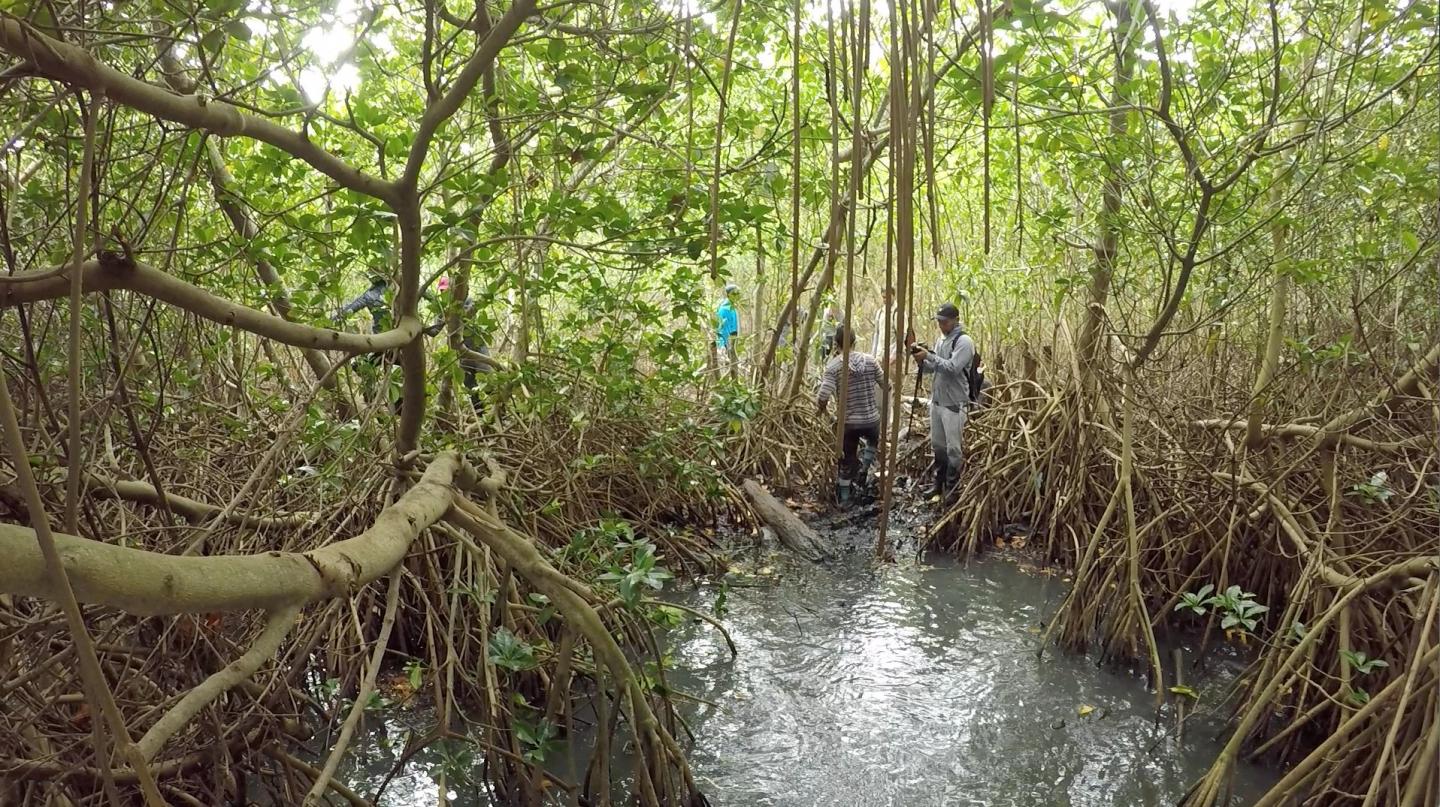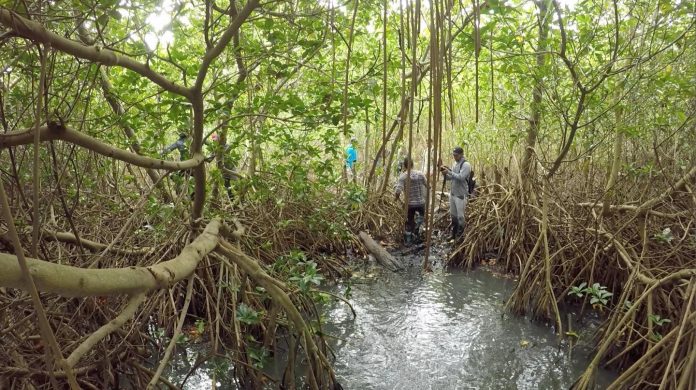
Photo: Mangroves with dense roots trap mud more effectively.
view more
Credit Image: Barend van Maanen
Some of the world’s most valuable ecosystems are facing a “triple threat” to their long-term durability and survival, new research shows.
The study found that mangrove forests, their large biodiversity and the coastal protection they provide are under pressure from three distinct threats – sea-level rise, lack of mud and squeezed habitats.
The research, conducted by an international team of experts including Dr Barend van Maanen from the University of Exeter, identifies not only how these coastal forests get pushed against their shores, but also what causes the loss of their diversity.
It shows the negative effects of river dams that decrease the supply of mud that could otherwise raise mangrove soils, while buildings and seawalls largely occupy the space that mangroves require for survival.
The study is published in Environmental Research Letters.
Coastal mangrove forests are valuable, highly biodiverse ecosystems that protect coastal communities against storms.
Mangroves withstand flooding by tides and capture mud to raise their soils. But as the mangrove trees cannot survive if they are under water for too long, the combination of sea-level rise and decreasing mud supply from rivers poses a serious threat.
New computer simulations show how coastal forests retreat landward under sea-level rise, especially in coastal areas where mud in the water is declining. The simulations include interactions among tides, mud transport and, for the first time, multiple mangrove species.
Dr van Maanen, senior lecturer at the University of Exeter and supervisor of the project, said: “Both mangrove coverage loss and diversity loss go hand in hand when that landward retreat is limited by expanding cities, agriculture or flood protection works.”
The model also shows that mangrove trees with dense roots trap mud more effectively and can stop it from reaching forest areas further inland.
Danghan Xie, PhD researcher at Utrecht University and lead author of the study said: “This makes the more landward-located trees flood for longer periods of time, an effect that is intensified by sea-level rise.
“Increasing landward flooding then seriously reduces biodiversity.
“Human land use prevents the mangroves ‘escaping’ flooding by migrating inland, narrowing the mangrove zone and further endangering biodiversity.”
A narrow mangrove zone is much less effective in protecting the coast against storms, or in the worst case loses its protective properties altogether.
Co-author Dr Christian Schwarz, environmental scientist at the University of Delaware, added: “The loss of mangrove species will have dramatic ecological and economic implications, but fortunately there are ways to help safeguarding these ecosystems.
“It is essential to secure or restore mud delivery to coasts to counter negative effects of sea-level rise.
“For coasts where mud supply remains limited, removal of barriers that obstruct inland migration is of utmost importance to avoid loss of mangrove forests and biodiversity.”
###
The publication Mangrove diversity loss under sea-level rise triggered by bio-morphodynamic feedbacks and anthropogenic pressures is published in Environmental Research Letters.
Co-authors are from Utrecht University, the Netherlands; University of Delaware, USA; University of Exeter, UK and Hohai University, China.
TDnews (tunisiesoir.com)















